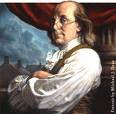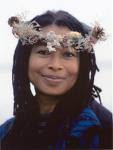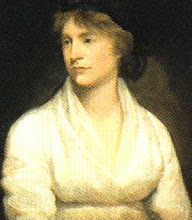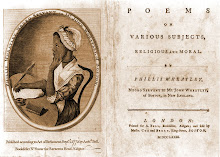07 October 2008
Compare/Contrast Pre-Islamic Poetry and 20th Century Middle Eastern Poetry (Middle Eastern Literature)
Pre-Islamic poetry and 20th Century Middle Eastern poetry remarkably possess similar themes and utilizes effective language. Despite these similarities, they also demonstrate distinctive differences as well. Pre-Islamic poetry is considered to exist among a pagan society in Middle East, before the rise and spread of Islam.
“The Poem of Imru-Ul-Quais” is believed to have been written before 622 C.E.. Whereas, 20th-Century Middle Eastern poetry, of course, is the modern-day poetry of the era in which we are living. Nizar Qabbani’s poem, “Jerusalem,” is indicative of this 20th-Century poetry. Despite the time lapses, many comparisons and contrasts can be made between the language and rhetorical devices of Pre-Islamic and Modern-day Middle Eastern poetry.
In analyzing “The Poem of Imru-Ul-Quais,” a well known Pre-Islamic poem of Arabia, one immediately realizes the effective use of language. The tone of the poem is subjective and focused on the poet and his feelings; no religious reference is made. The poem is distinctively descriptive and sometimes musical. The themes are love, egotism, nature, and pain. Furthermore, the poem uses many rhetorical devices, but the most prominent is simile and anaphora.
First, the descriptive language of the poem is conveyed within the lines. In describing his lost love, the poet remarks:
She was slender of waist, and full in the ankle. / Thin-waisted, white-skinned, slender of body, / her breast shining polished like a mirror. / In complexion she is like the first egg of the ostrich---white, mixed with yellow. (58-61)
The poet places a great deal of detail in the description of his love. Moreover, he uses descriptive language to explain the physical attributes of his horse. He states:
Well-bred was he, long-bodied, outstripping the wild beasts in speed / Bay-colored, and so smooth the saddle slips from him, as the rain from a smooth stone, / Thin but full of life, fire boils within him like the snorting of a boiling kettle; / He has the flanks of a buck, the legs of an ostrich, and the gallop of a wolf. (92, 94-95, 99)
The descriptive language is compelling and effective. It provides the words into visual pictures for the reader.
Second, the lines are sometimes musical as well. The poet seems to be aware that a certain combination of words can create a distinction in sound. One line demonstrates the technique more than any other. In line 46 the poets states, “Many a fair one, whose tent can not be sought by others, have I enjoyed playing with.” The line is musical, especially if it is read as an iambic line.
Moreover, the theme of love gleams the lines of the poem. The poet makes several references to his present and past loves. The first line asks the reader to “stop, oh my friends, let us pause to weep over the remembrance of my beloved.” Next, he remarks, “The follies of men cease with youth, but my heart does not cease to love you” (79). References of the love the poet feels is intertwined within the entire poem. Love is the major theme.
Also, a coherent theme of the poem is the subjective and egotistical stance of the poet. It is blatant to the reader. Not only is the poet often egotistical, he is somewhat arrogant as well. In line 46, he states, “Many a fair one, whose tent can not be sought by others, have I enjoyed playing with.” Next, he explains he has spent “many pleasant days…with fair women / Many a beautiful woman like you, Oh Unaizah, have I visited at night ” (21, 35).
Another theme is the impact of nature in the poet’s environment. He describes many different settings of the landscape. First, he comments, “I stood in the gardens of our tribe, / Amid the acacia-shrubs where my eyes were blinded with tears by the smart from the bursting pods of colocynth” (7-9).
Next, he mentions, “The South wind blows the sand over them the North wind sweeps it away” (4). Finally, he references, “I sat down with my companions and watched the lightning and the coming storm / So mighty was the storm that it hurled upon their faces the huge kanahbul trees,” (114, 117). Through these lines, the reader realizes the impact of nature on the poet’s life.
The last important theme is pain. The poet’s pain is caused by the loss of his love. The poet states, “As I lament in the place made desolate, my friends stop their camels; / They cry to me “Do not die of grief; bear this sorrow patiently.” / Nay, the cure of my sorrow must come from gushing tears” (10-12).
Furthermore, he explains, “Thus the tears flowed down on my breast, remembering the days of love; / The tears wetted even my sword-belt, so tender was my love” (19-20). In essence, the poet expression of pain is intertwined within the lines of the poem, alongside the love that he once felt for his lost love.
Aside for the language and themes, the poem utilizes a host of rhetorical devices. The most prominent is simile which is evident within the lines of “The Poem of Imru-Ul-Quais.” Many examples can be found within the poem. Most poignant, the poet remarks, “Fair were they also, diffusing the odor of musk as they moved, / Like the soft zephyr bringing with it the scent of the clove” (17-18).
Then, he states, “The fat was woven with the lean like loose fringes of white twisted silk” (28). Next, he explains, “She turns away, and shows her smooth cheek, forbidding with a glancing eye, / Like that of a wild animal, with young, in the desert of Wajrah. / And shows a neck like the neck of a white deer” (63-65).
When describing his love, the poet recalls, “Her form is like the stem of a palm-tree bending over from the weight of its fruit” (72). The poet describes his love; he states, “In the evening she brightens the darkness, as if she were the light-tower of a monk” (76). When addressing the encampment of his love, he recalls, “The dung of the wild deer lies there thick as the seeds of pepper” (6). Simile is a major component of the poem.
Also, the poet uses anaphora as a rhetorical device. In the last lines of the poem, a clear example of anaphora is epitomized. He announces:
As though a Yemani merchant were spreading out all the rich clothes from his trunks, / As though the little birds of the valley of Jiwana awakened in the morning / As though all the wild beasts has been covered with sand and mud, like the onion’s root bulbs / They were drowned and lost in the depths of the desert at evening. (126-127, 129-130)
The poet draws emphasis to the last line of the poem by using anaphora. It is an effective and timeless use of language which is still effective today.
In 20th-Century Middle Eastern poetry, the same analysis can be applied. In analyzing Qabbani’s “Jerusalem,” one also immediately recognizes the effective use of language. However, there is one striking difference; the poem has a religious tone. The poem is distinctively descriptive.
However, instead of the major theme being love; overwhelmingly, the prevalent themes are pain, doubt, and hope. Furthermore, the poem uses many rhetorical devices, but the most prominent is metaphor, anaphora, personification and the rhetorical question.
First, the descriptive language of the poem is conveyed within the lines. By describing his sorrow and pain, the poet remarks, “I wept until my tears were dry / I prayed until the candles flickered / I knelt until the floor creaked” (1-3). The opening lines are powerful and indicative of the effective use of descriptive language. Also, the poet effectively combines descriptive language and repetition to evoke powerful imagery for the reader. He states:
City of the virgin, your eyes are sad / City swathed in black, who’ll ring the bells / City of sorrows, a huge tear / Jerusalem, beloved city of mine / My city, city of olives and peace. (9, 13, 17, 22, 30)
The language is thought-provoking as well as image-provoking. The poet understands how language can affect the reader.
The major themes of the poem are pain, doubt and hope. The poet expresses these themes through metaphor, anaphora, personification and the rhetorical question. He states, “Jerusalem, you of the myriad minarets, / become a beautiful little girl with burned fingers” (7-8). This is a poignant metaphor of pain and suffering. The writer speaks of a society in which its children are burned, disfigured. Next, he conveys pain and doubt through the anaphora and the rhetorical question. He asks:
City swathed in black, who’ll ring the bells / Who will carry toys to children / Who’ll save the Bible? / Who’ll save the Qur’an? / Who will save Christ, who will save man?
The message of pain and doubt is evident to the reader. Though the images, pathos is achieved. Next, the poet uses personification to expand on the themes of pain and doubt. He notes, “The stones of your streets grow sad” (11). Finally through personification, he gives the reader a shimmer of hope. He states: “Jerusalem, beloved city of mine, / Tomorrow you lemon trees will bloom, / your green stalks and branches rise up joyful, / and your eyes will laugh” (22-25).
In summary, Pre-Islamic and 20th Century Poetry can not be read by Western standards. It has its own beauty and form. The reader can not look for iambic pentameter, or rhymes schemes; the reader must place close attention to the imagery displayed the use of descriptive language and rhetorical devices. Although very different in length, structure, ideology, and religious reference, “The Poem of Imru-Ul-Quais” and “Jerusalem” possess many similarities in the usage of effective language.
Subscribe to:
Post Comments (Atom)









No comments:
Post a Comment